How to Copy a Table from PDF to Excel the Right Way
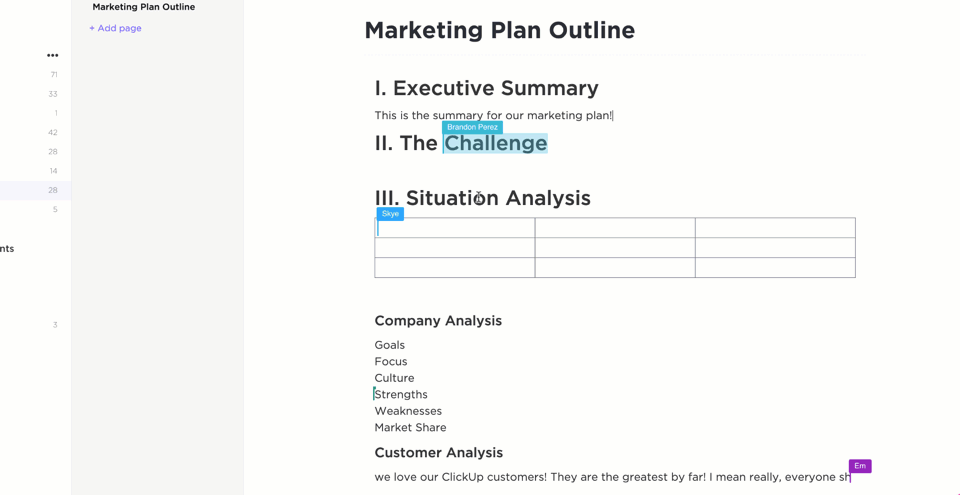
Sorry, there were no results found for “”
Sorry, there were no results found for “”
Sorry, there were no results found for “”

There’s a reason PDFs are everywhere—they’re reliable, they look professional, and they keep data from being accidentally changed. But try analyzing that data or running calculations on a PDF, and you’ll hit a roadblock.
Sure, PDFs are great for sharing information, but nothing beats Excel’s flexibility and functionality in analysis and data digging.
The only struggle? Copying those beautifully formatted tables (with all their conditional formats, pivots, and cell colors) from PDFs into Excel without wrecking the layout or spending hours fixing it. And let’s not even talk about scanned PDFs. 🙄
But don’t sweat. Let’s show you how to copy tables from PDF to Excel without losing formatting.
Need to copy tables from a PDF to Excel? Here are all the methods:
Here are some effective methods for copying tables from PDF to Excel:
The standard copy-paste method is relatively simple and requires no additional tools. It works well for copying small, simple tables from a PDF document into an Excel spreadsheet.
Here’s a quick step-by-step guide to copy-pasting a table from PDF to Excel:
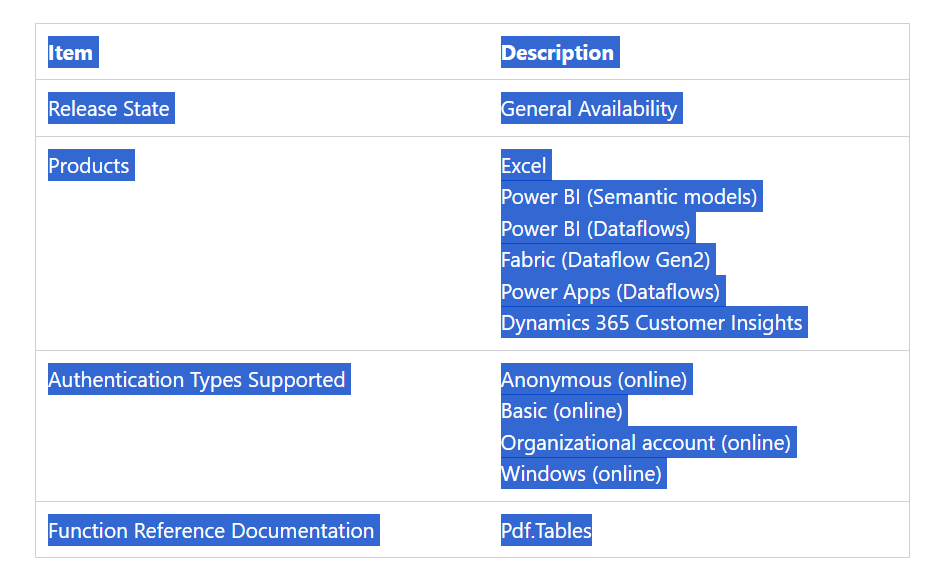
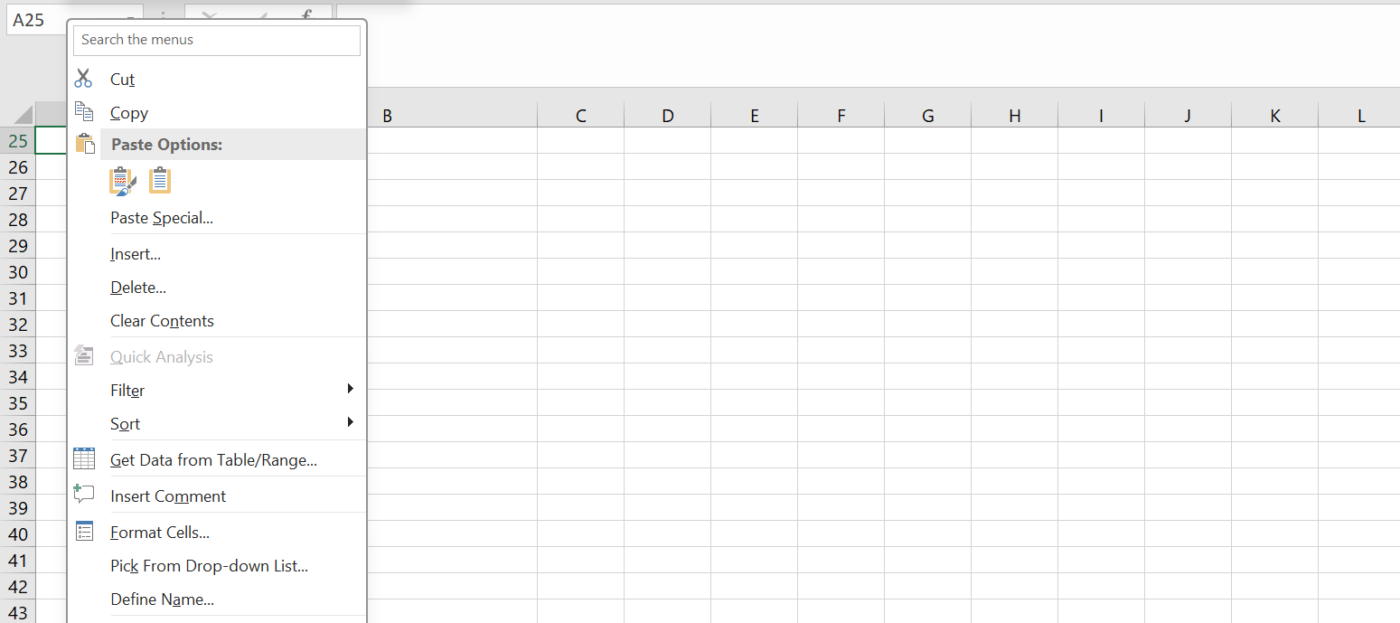
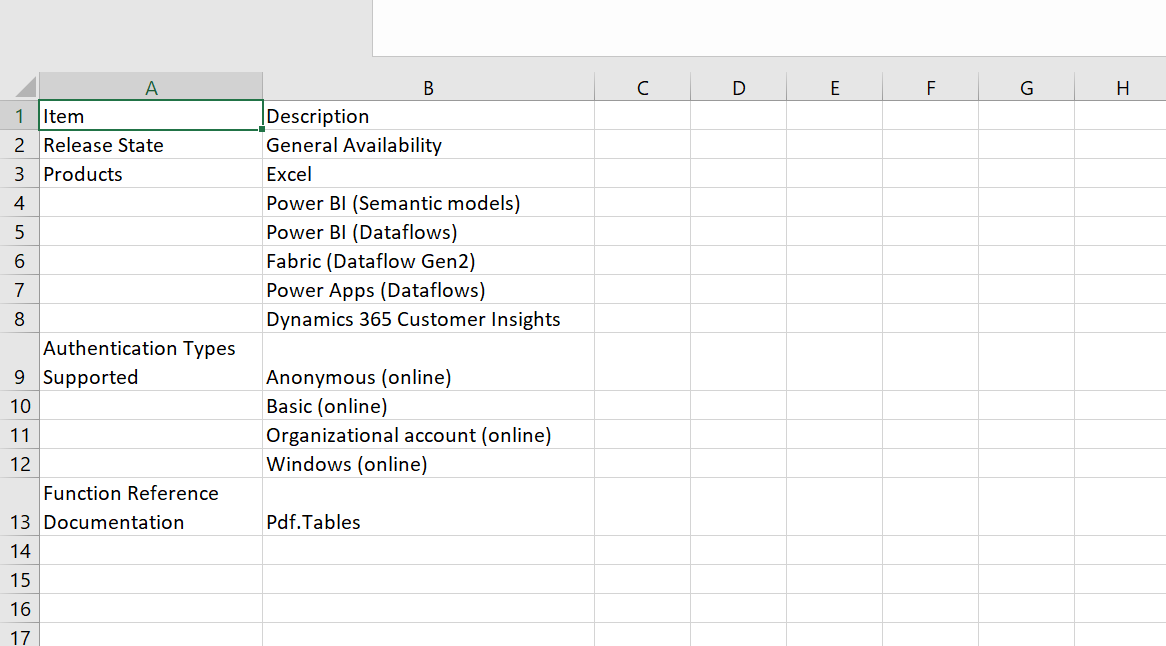
⚠️ Caution: The direct copy-paste method may not always preserve the original table structure, especially if the PDF contains complex formatting, merged cells, or irregular column alignments. In such cases, the pasted data may require significant manual cleanup, including adjusting column widths and removing extra spaces for better formatting.
The Word-to-Excel method lets you open and edit your PDF directly in Microsoft Word. This approach is simple and effective for retaining the formatting of small tables.
Here’s a quick step-by-step guide to copying data from PDF into Excel tables using Microsoft Word:
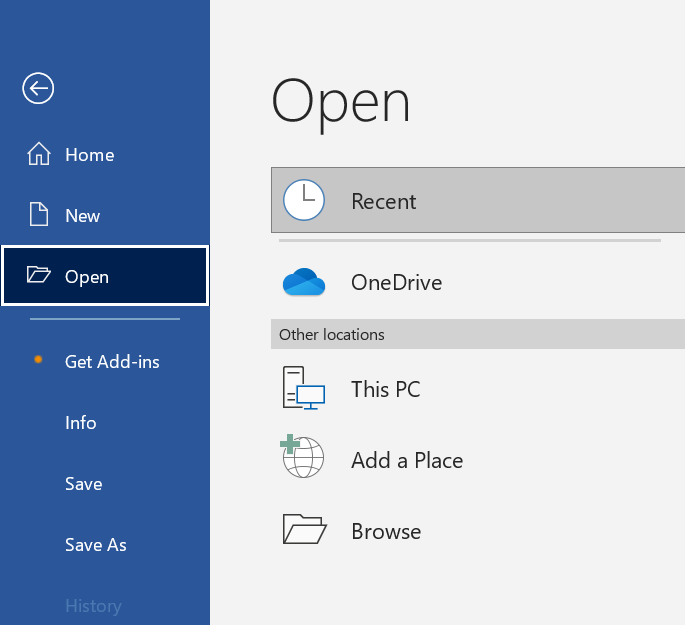
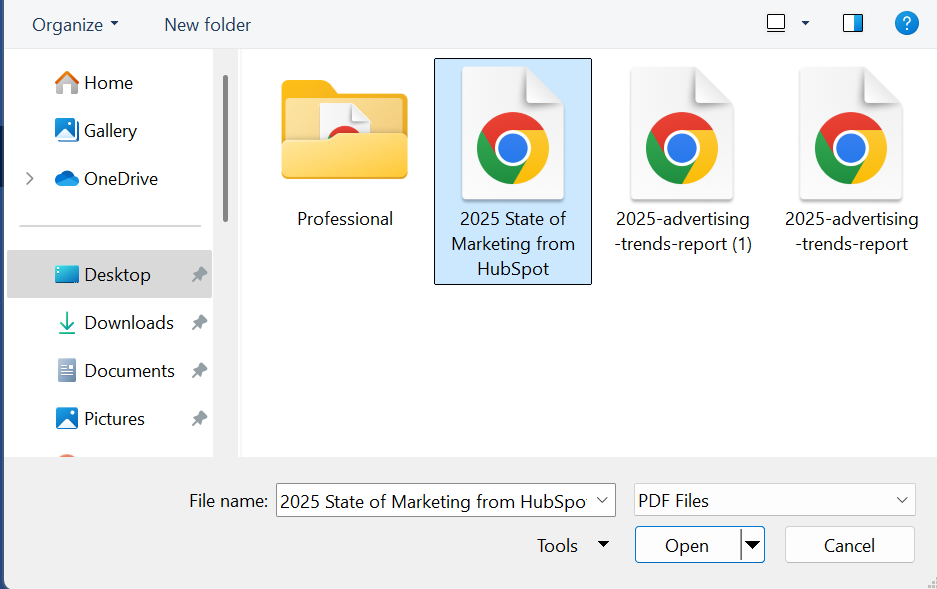

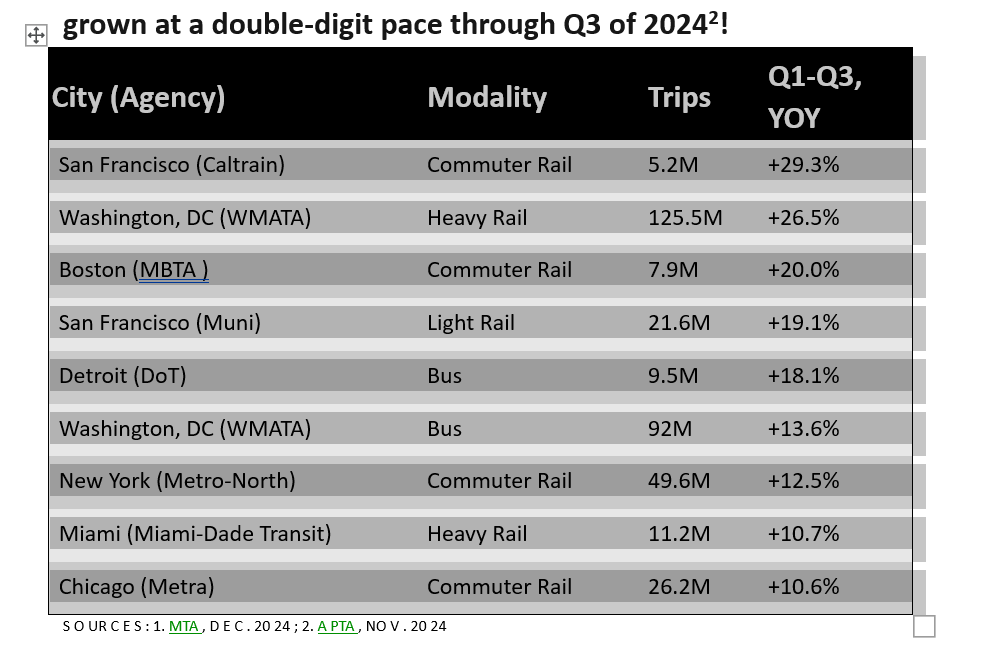
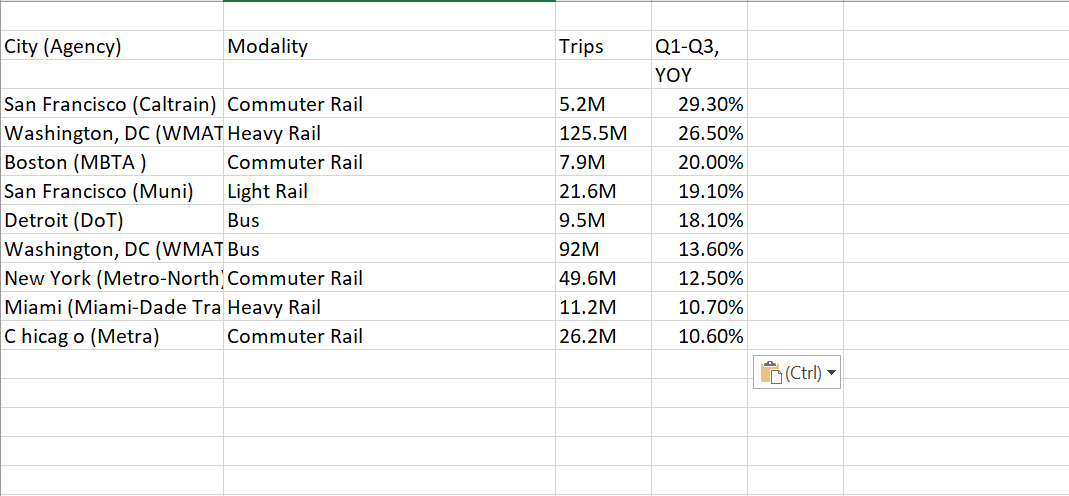
📌 Curated for you, here’s an underrated Excel cheat sheet:
The Excel Power Query method lets you import tables from any PDF while keeping most table formatting intact.
Here’s a walkthrough of importing PDF tables directly into Microsoft Excel format:
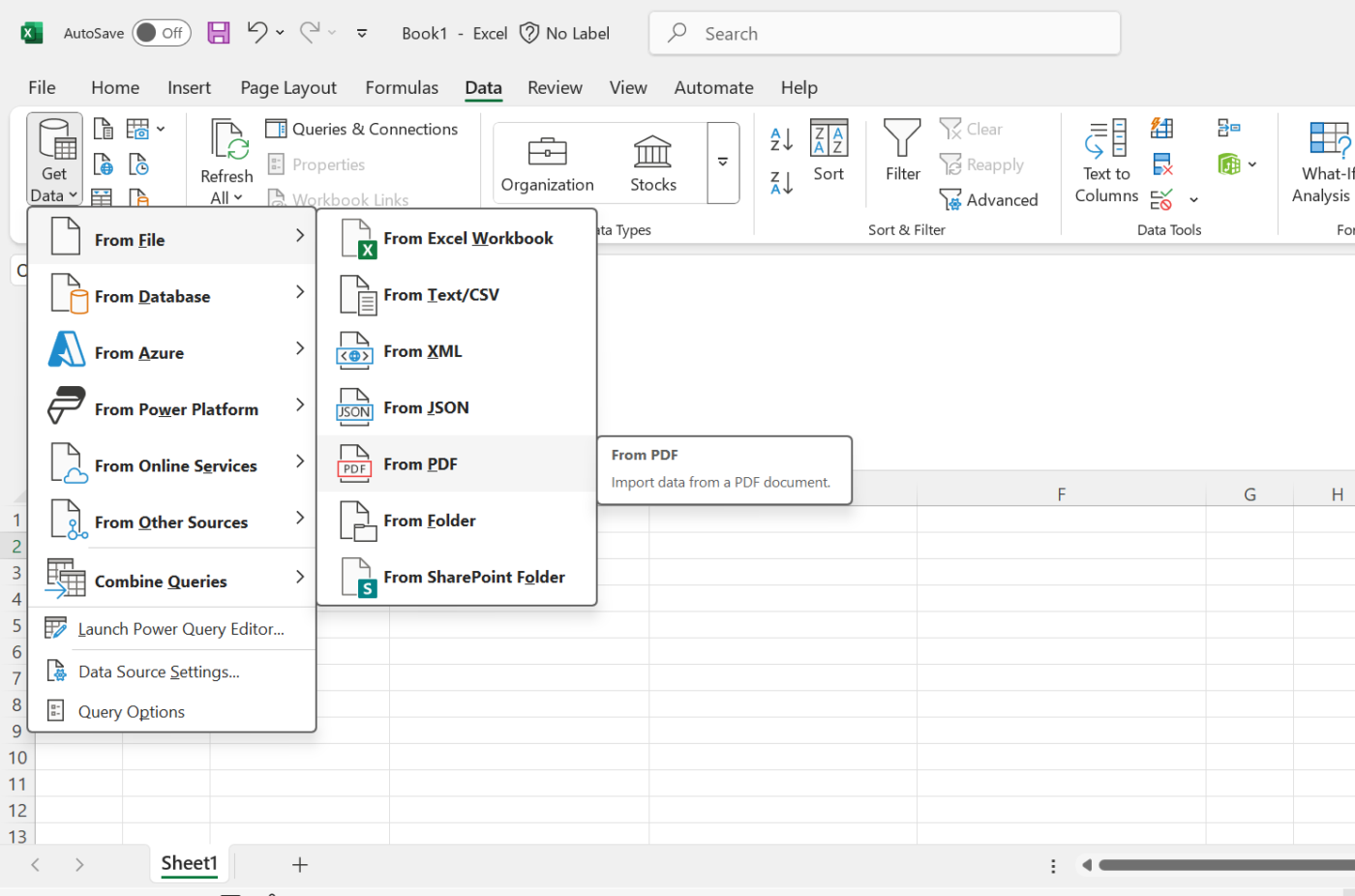
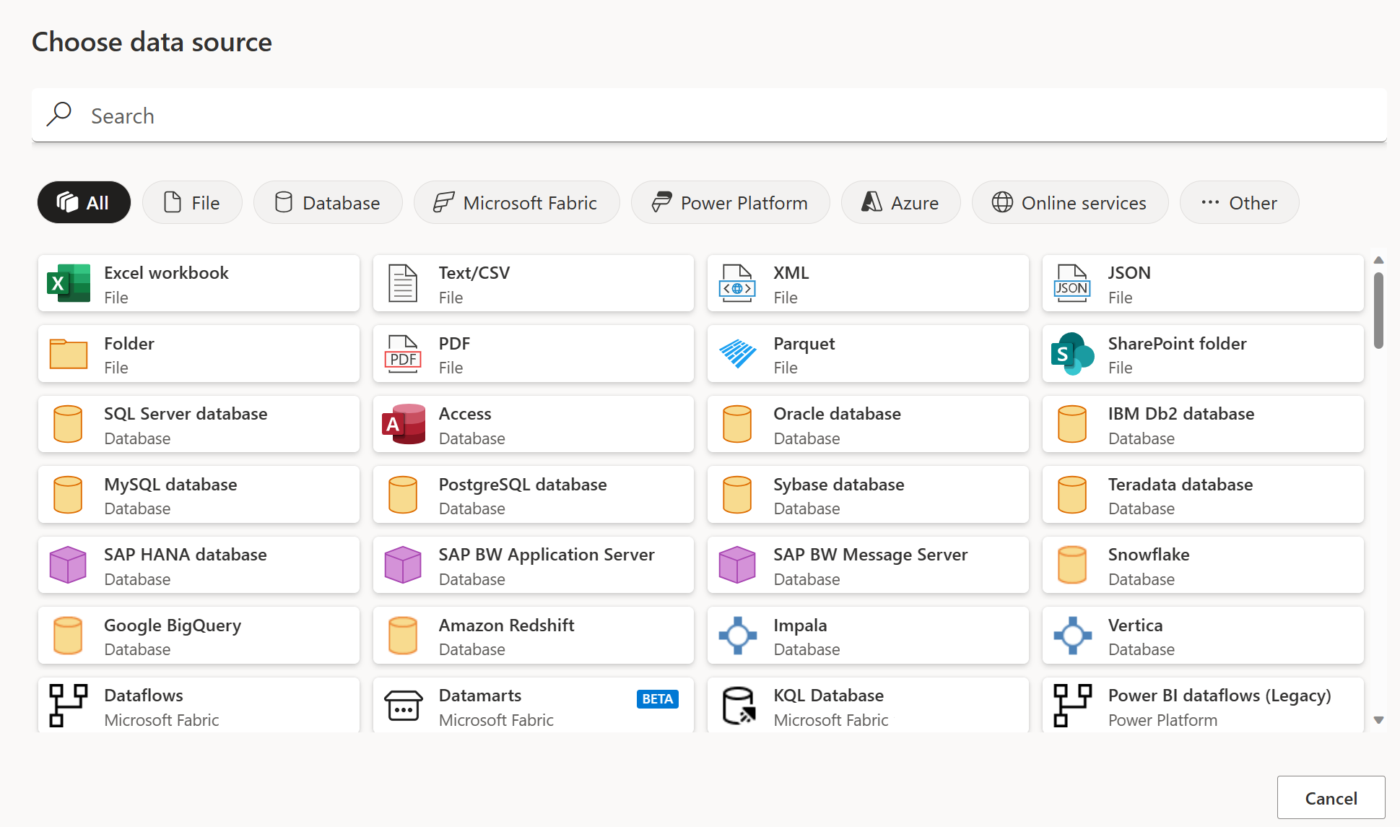
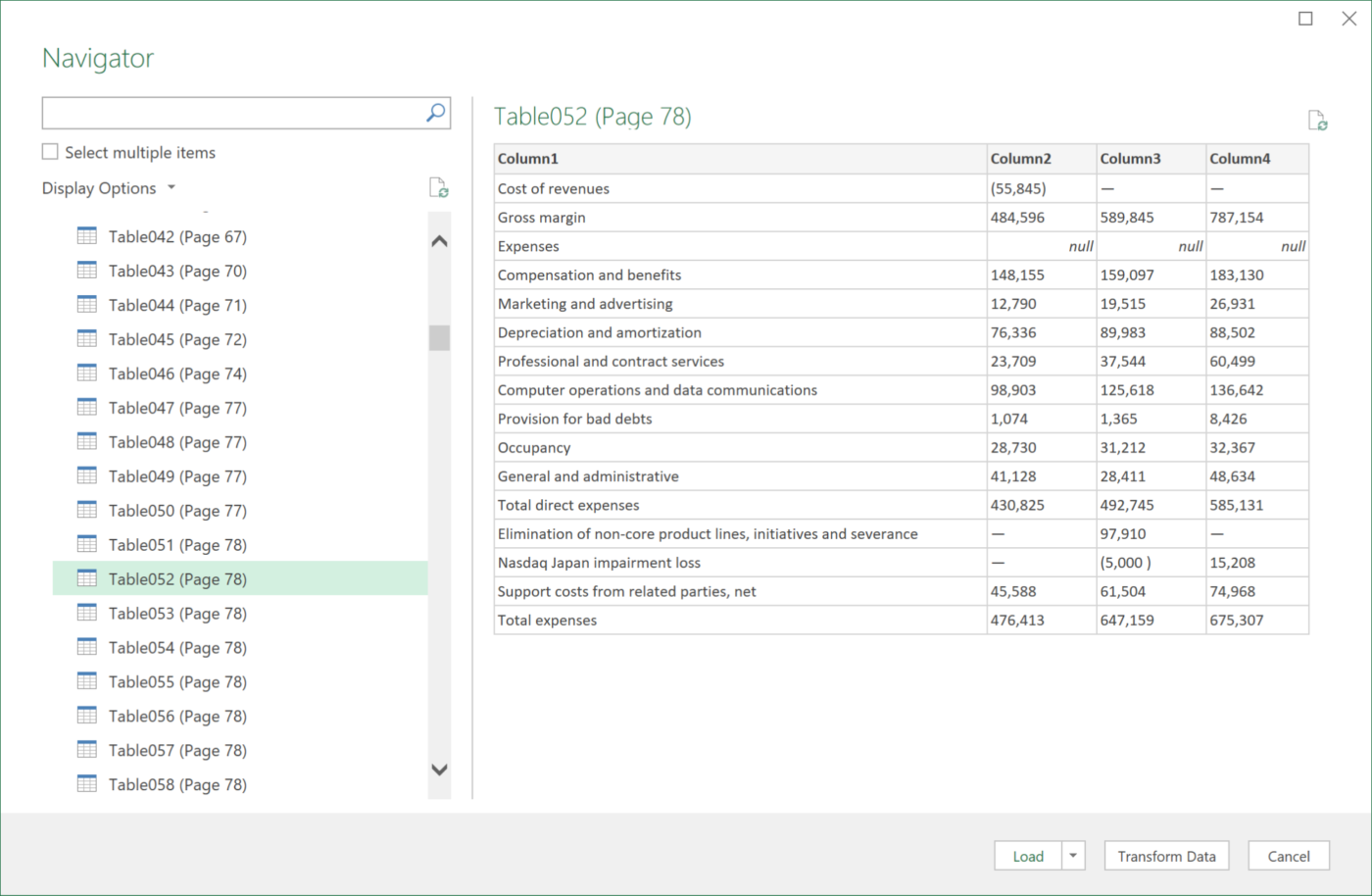
Read Also: How to Export SharePoint Lists to Excel
⚠️ Caution: This method is only available for Windows users with a Microsoft 365 subscription. While it allows data to be extracted from an entire document at once, it may struggle with complex tables or scanned images.
Here, you use online or offline PDF converters to transfer tables from PDFs to Excel quickly. This method is particularly convenient for frequent data extraction from PDFs. Most free converters can convert your PDF into CSV, XLS, or XLSX formats with reasonable accuracy—at least for simple tables.
Here’s a guide for using an online conversion tool:

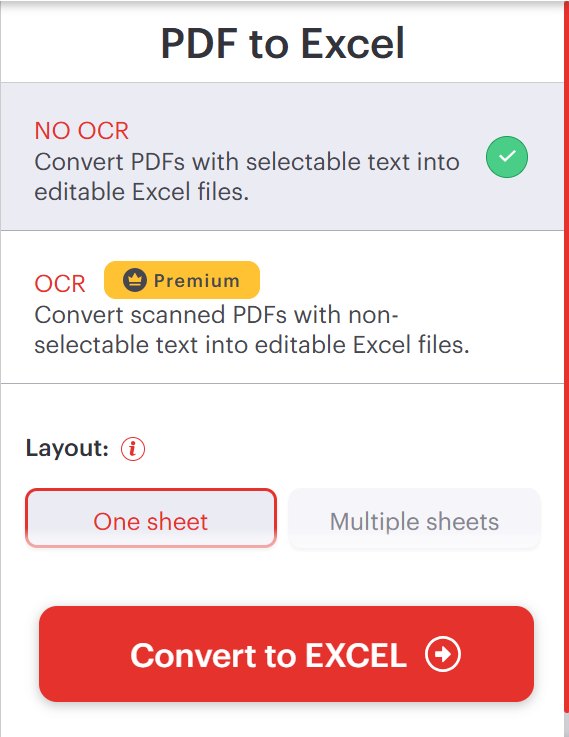

⚠️ Caution:
1. PDF converters work well for extracting tables from native PDFs with selectable text but struggle with scanned PDFs or image-based documents, as they lack OCR capabilities
2. Free online PDF converters process files on external servers, which can pose data privacy and security risks, especially for sensitive or confidential documents. If handling sensitive data, it’s safer to use offline tools or trusted enterprise-grade solutions to ensure data protection
If these standard methods don’t work well, a few additional workarounds exist to copy PDF tables into Excel.
Let’s take a look:
OCR (Optical Character Recognition) tools like Adobe Acrobat Pro and Nanonets can extract tables from scanned PDFs by converting them into editable formats. These tools also have AI-powered features that learn and adapt to different table layouts for more accurate extraction.
Tools like Tabula and Excalibur can extract table data from text-based PDFs using data parsing techniques. These tools allow you to control, fine-tune, and apply data validation to the extraction settings based on your needs.
You can edit the PDF in Google Docs and copy the table to Google Sheets. While this method retains basic formatting, it often requires manual cleanup for columns and merged cells.
Now, here are a couple of quick tips to help you retain formatting when copying tables from PDF to Excel using the above methods:
💡 Pro Tip: Try the good ol’ ‘Divide and Conquer’ trick. Rather than wrestling with the whole table in one go, split it into smaller chunks first. Extract each segment individually, ensuring each one keeps its formatting intact, then stitch everything neatly back together in Excel with a quick VLOOKUP or INDEX-MATCH.
Most of the methods we discussed above work perfectly with simple and small data tables. However, as complexity factors in (with merged cells, multi-level headers, or scanned PDFs), the copy-paste approach quickly becomes ineffective, requiring extensive time and manual cleanup.
From misaligned columns to lost formatting, here are some specific limitations of copying PDF table to Excel:
Yes, you can choose ‘Keep Source Formatting’ to retain cell shading, fonts, and table design. However, this method often results in broken borders, extra spaces, and misaligned columns, requiring extensive manual adjustments. In many cases, editing PDF files directly is what you’d need to do, but that just adds an extra step to the process.
You can only convert tables from one PDF at a time, except for a few paid tools. Even with paid options that offer batch processing, the accuracy often drops significantly when handling large volumes of data. This makes copying PDF tables to Excel impractical for users who need to process multiple documents daily.
If the PDF contains embedded formulas, links, or calculated fields, they are often converted into static values when imported into Excel. This means you’ll need to recreate the formulas manually to edit or update the calculations. Besides, any links or references that allowed you to trace back to original data sources in the PDF will be lost.
Most tools only support Native PDFs to copy tables into Excel files. The few that can handle scanned documents and images rely on OCR but struggle with low-quality or blurry scans. This often leads to garbled text, missing cells, or misaligned tables requiring manual fixes.
Whatever method you use, most of them struggle with complex tables containing multi-level headers, merged cells, or nested tables. When you copy or extract such tables from PDF, they often result in misaligned columns, merged data, or missing cells in Excel. Not only is fixing these errors time-consuming, but it also increases the risk of costly mistakes.
Copying tables from PDFs into Excel often leads to formatting headaches, lost formulas, and time-consuming manual fixes.
And that’s just the start of your struggle. Excel spreadsheets have their own set of limitations. As data grows, keeping track of versions, creating reports, and collaborating with your team can quickly become a hassle.
That’s when you need a solution that takes the chaos out of data management and collaboration—something more organized than traditional spreadsheets.
Enter ClickUp, the everything app for work known for data organization, management, and collaboration—all powered by the world’s most cohesive work AI.
Here’s how you can use ClickUp to make data management smoother and more efficient:
Instead of dealing with scattered files and numerous document versions, use ClickUp Docs to consolidate your team’s work into one cohesive, accessible location.
In a few clicks, you can import a ClickUp list as a table into your doc or create one from scratch using the /table command. From there, you can format columns, adjust widths, fix layouts, and reorder tabs—all while staying in the doc.
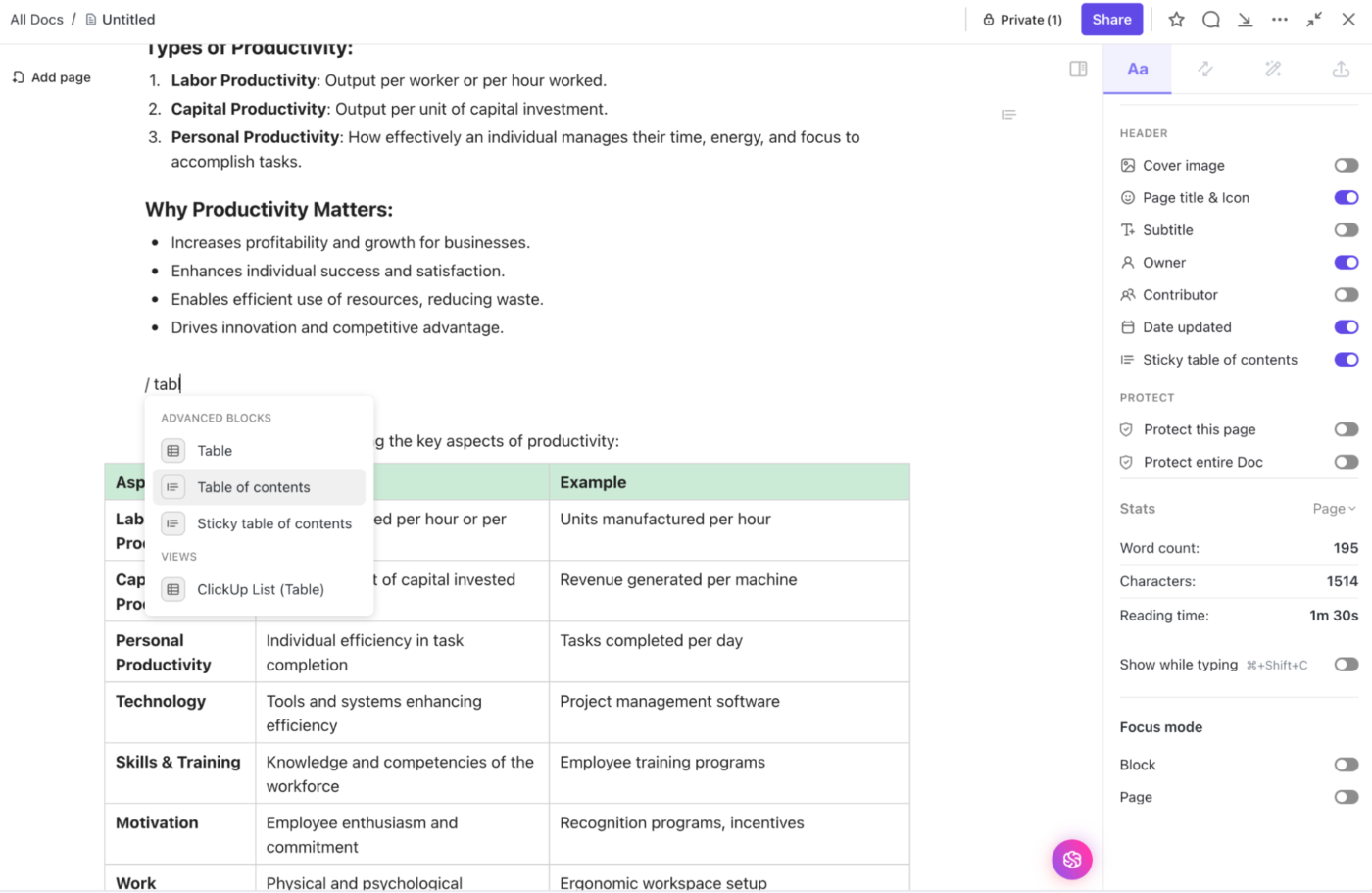
Even better, ClickUp lets you import content from third-party apps into Docs while preserving the original formatting.
And right when you thought it couldn’t get better, ClickUp Docs has real-time collaboration, ensuring everyone on the team can edit, comment, and format the document on the go when they want to.
In a nutshell:

🧠 Did You Know? Errors in Excel spreadsheets partly caused the infamous $6 billion London Whale debacle. The financial model relied on manual data entry, with analysts copying and pasting figures between spreadsheets—leading to critical miscalculations and massive losses.
Document management is just one piece of the puzzle. Apart from that, you need to give shape and structure to rough data as they arrive. This is when you can use ClickUp Table View to visualize data through a condensed view of large datasets.
📮 ClickUp Insight: 92% of knowledge workers risk losing important decisions scattered across chat, email, and spreadsheets. Without a unified system for capturing and tracking decisions, critical business insights get lost in the digital noise.
With ClickUp’s Task Management capabilities, you never have to worry about this. Create tasks from chat, task comments, docs, and emails with a single click!
At a glance, it helps you link tasks, docs, and dependencies seamlessly, making it easier to keep projects connected.
Even better, the spreadsheet-like layout offers enhanced customization through ClickUp Custom Fields. This makes managing multiple data sources easier and capturing specific data points crucial for your projects.
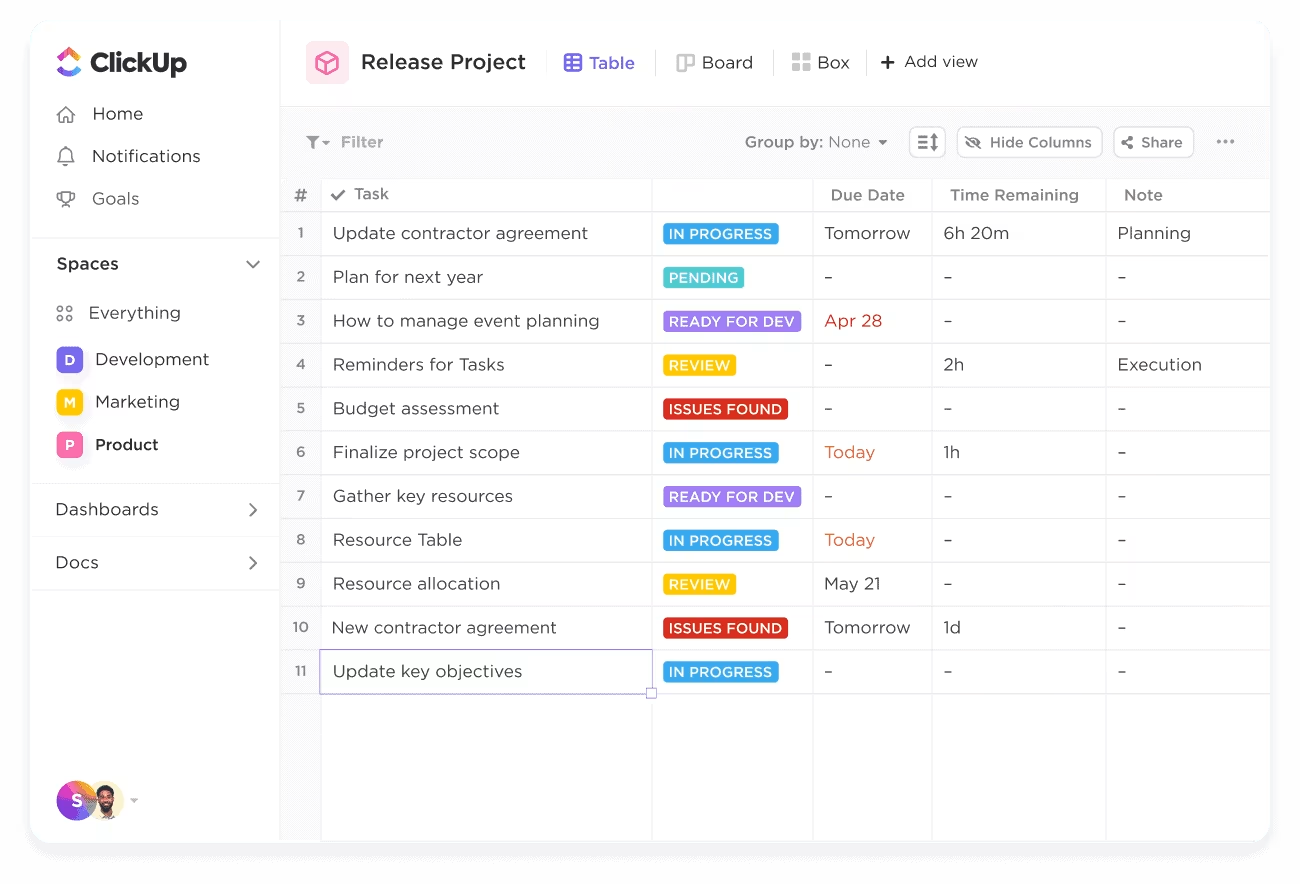
With Table View, you can:
But have you ever started a project with one tool only to realize halfway through that you actually needed a different format? This happens all the time, and you may end up manually transferring everything over (copy-pasting like it’s 2005) or just accepting the mess and making do—neither of which is ideal.
With ClickUp, you’re not locked into one format. Whether starting with a Doc, a Table, or a List, you can switch between views instantly without losing data or context.
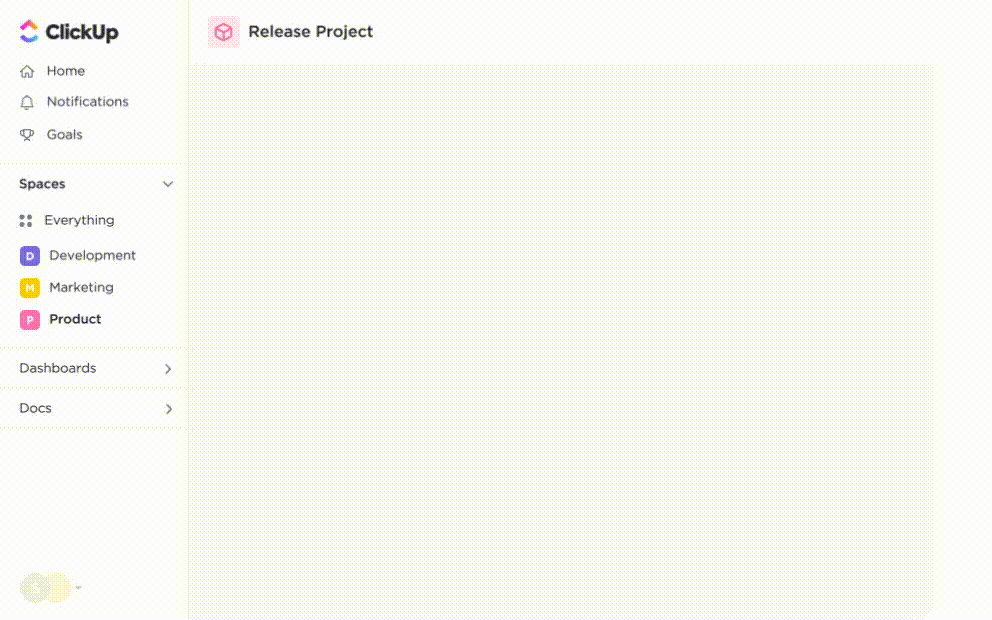
📝 Taking meeting notes? Start in ClickUp Docs. When those notes turn into action items, just convert them into ClickUp Tasks, right in the same workspace
📊 Tracking budget numbers? Start in Tables. If you need a high-level visual overview, switch to a Board or Gantt chart with a single click
✅ Managing a complex project? View it as a List today, a Dashboard tomorrow, and a Calendar when deadlines start creeping up
So, the next time you start with a simple document and realize you need more structure, you won’t have to stop everything, export files, or start over somewhere else. Just switch the view and keep going.
⏳ Time-Saver: If you’re feeling overwhelmed, use ClickUp’s Spreadsheet Template. It gives you a ready-made structure for tracking data, managing tasks, and organizing projects, all without the limitations of a traditional spreadsheet.
But, sometimes, sifting through an entire Table View, Doc, or Task just to find one crucial detail becomes time-draining. This is when you can use ClickUp Brain, the built-in AI assistant for ClickUp.
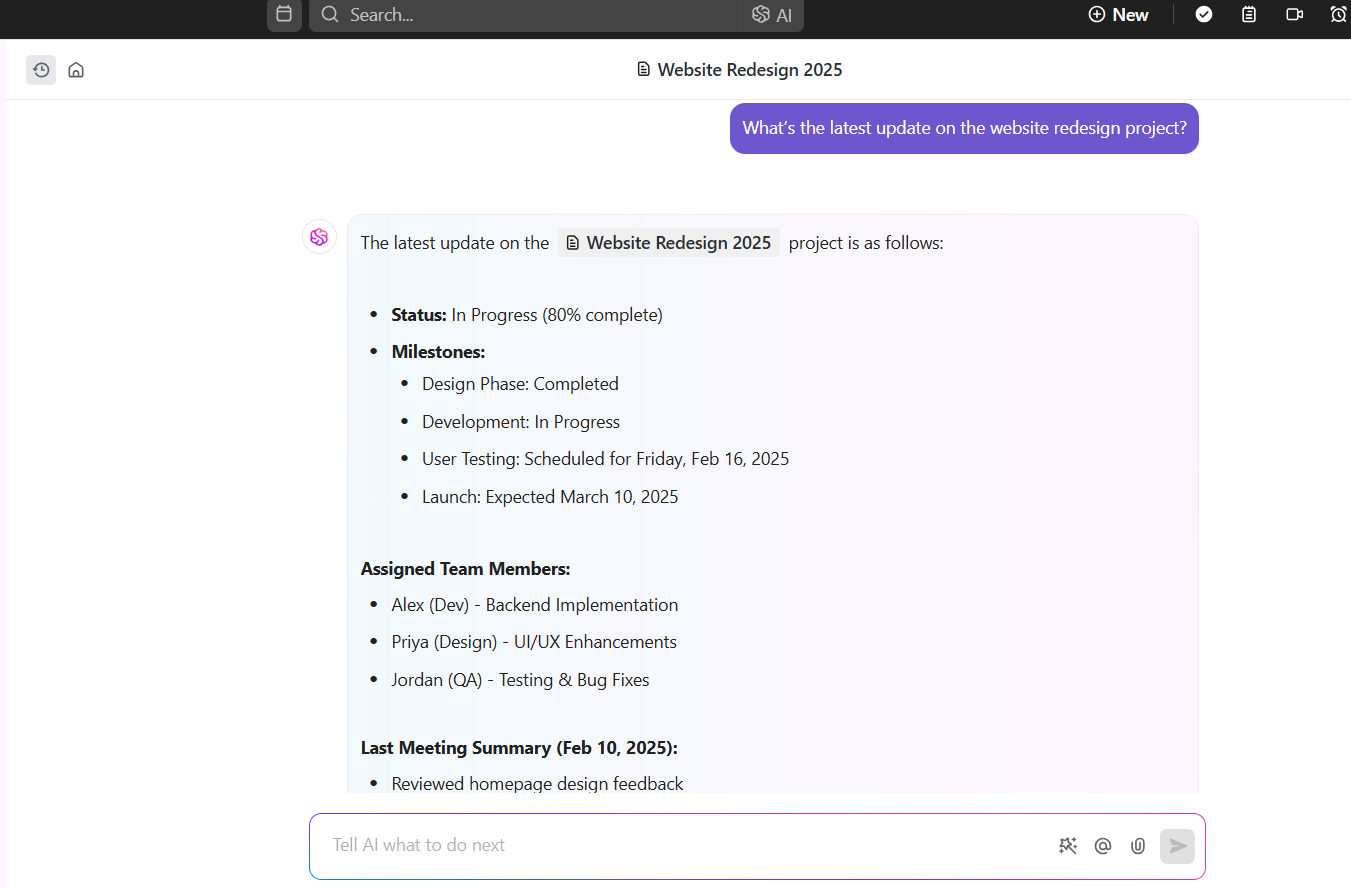
Instead of manually hunting through rows of data or flipping through Docs, just ask Brain 🧠. With a simple conversation prompt, Brain surfaces the most relevant insights, action items, or project updates instantly.
Nothing beats spreadsheets for analyzing data. However, managing them is where it gets exhausting.
With ClickUp, you can effortlessly organize, visualize, and collaborate on your data—all from a single platform.
From importing spreadsheets to creating custom tables with advanced filters and gaining a real-time view of your data, ClickUp makes complex data management smooth and efficient.
Sign up for ClickUp now and simplify your data management.
© 2025 ClickUp